Why Take Care of My Baby's Teeth, They Fall Out Anyway
Senior dog anesthesia tin can be a controversial topic. Is your domestic dog is too onetime for anesthesia? Is living with the condition quo better than risking anesthesia? Integrative veterinarian Dr. Julie Buzby guides you through how to brand this decision in the best interest of your dear old dog.
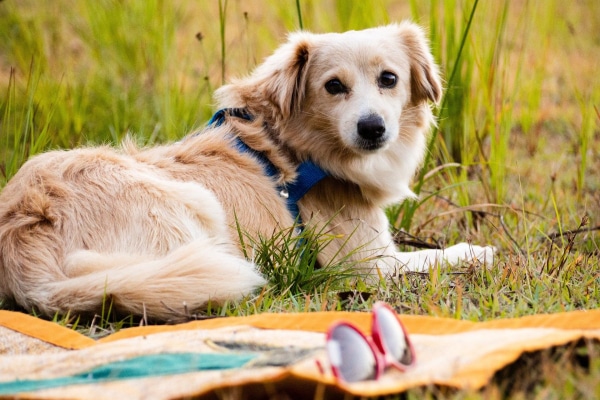
When is a dog too old for anesthesia?
As a veterinarian, I have a healthy respect for anesthesia and understand my clients' fears. Anesthesia is essentially the procedure of taking a living being to the brink of death—obliterating many life-preserving reflexes—and then bringing that existence back to life once more. It is never, e'er without risk. I calculate that risk for any domestic dog undergoing anesthesia, regardless of age—weighing risk versus reward.
Senior dog anesthesia is a calculated risk
More often than non, when I tell people I'm a veterinarian, their first reaction is to tell me that they dear animals, but could never take worked in veterinary medicine because dog euthanasia is likewise distressing. While I obviously wish all dogs lived forever, euthanasia is non where the biggest gut-dial lies for me. Losing a patient under anesthesia is what I lose sleep over.
A decade ago, I lost a patient named Teddy nether anesthesia. Teddy the Pug would probably have been considered over 100 in "human years," which, of course, was a concern as nosotros considered anesthesia for an elective process. By this indicate, he had more than rotten teeth than salubrious ones, so it was my professional opinion that the benefits outweighed the risks for Teddy having a complicated dental procedure involving over a dozen extractions. I tin can say with confidence it'southward what I would have washed for my ain dog.
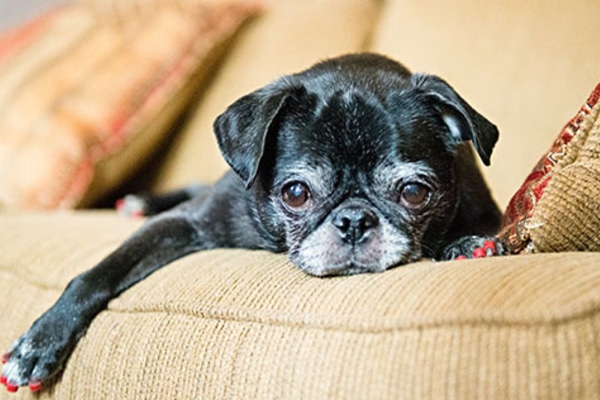
Anesthesia for oral surgery in senior dogs
Teddy's mom agreed that he was in a lot of pain and that the anesthesia for oral surgery was a take a chance worth taking. He might have been in his golden years—when many would argue anesthesia is just not worth it—merely the hope of eliminating his hurting made the conclusion obvious.
I contacted board-certified anesthesiologists earlier the surgery to discuss my concerns and formulate a customized anesthetic protocol based on historic period, lab results, and concrete condition.
The dental procedure took over two hours and Teddy's vital signs were perfect. No blood-red flags. I worked as swiftly equally I could to extract the abscessed teeth and suture the flaps of gum left behind. Meanwhile, my conscientious technician monitored Teddy'due south anesthetic depth, center rate, respiratory charge per unit, body temperature, blood pressure, and blood oxygen levels, and we fabricated adjustments in Teddy'south anesthesia appropriately.
She carefully recorded this information every few minutes on a nautical chart, which she held on a clipboard, so we could monitor trends. We gave Teddy intravenous fluids before and during the procedure to maintain his claret pressure and hydration.
When the unexpected happens…
Finally, I tied the final suture and stood upwards to stretch my agonized back. Despite my fatigue, I felt proud of the work I'd washed. I expected this surgery would exist life-changing for this canis familiaris. I knew that Teddy would have a few rough days, during which we would exist aggressive with a cocktail of pain medications. Only then, as he began to move into the healing phase, I truly believed he would be a different dog—acting years younger.
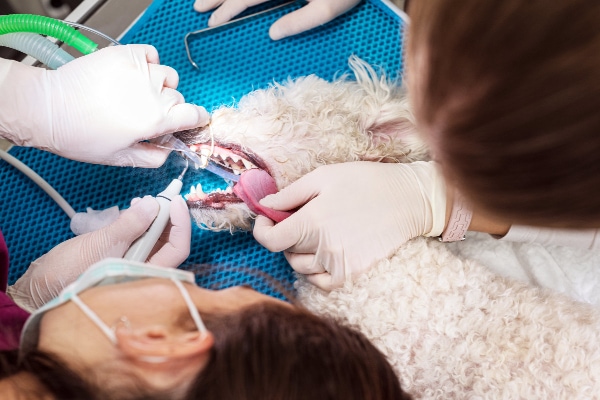
Major dental work for dental disease in dogs can exist a fountain of youth for senior dogs. I had witnessed this transformation dozens of times. I couldn't wait to sentinel him bloom.
As I wrapped up my medical notes, my technician turned off the anesthetic gas. This immune Teddy to exhale pure oxygen from the car as we cleaned upward his rima oris, which was standard process.
Seconds later, Teddy veered off the normal path of recovery. Instead of slowly waking up…Teddy died.
Alarm bells sounded on our anesthetic monitoring machines. He had no middle rate. No pulse. No respiratory rate. We immediately began chest compressions and animate for him through the anesthesia machine. We had all hands on deck every bit we drew upwardly drugs and pumped them into his blood stream in an attempt to restart his heart.
Loss and love…grief and grace
As the scene unfolded, my mind jumped to Teddy'south family unit. Here he was, dying in my intendance, and his family was elsewhere, going near their day, unaware of the crisis. While nosotros worked on Teddy, my receptionist immediately got a family fellow member on the line so I could briefly alert them that Teddy had taken a turn for the worse.
By the time they arrived, Teddy was officially gone. The grief in our office was palpable, shrouding the soul of every i of usa in the edifice. I will never forget the reaction of Teddy's parents, which I was dreading. They wept with us–and they extended an incredible amount of grace. They knew we did our all-time and they told us so.
Again, I reached out to the same specialists who helped me strategize the anesthetic protocol nosotros had used for Teddy. I explained the unabridged story and provided the data which we had charted on the clipboard.
They all arrived at the same conclusion: Teddy had near likely suffered a pulmonary embolism—a clot which blocked blood supply betwixt the heart and lungs. We couldn't accept foreseen this. There was nothing that we could have done differently. But that didn't change that fact that Teddy was gone, and I had been responsible for his life that afternoon.
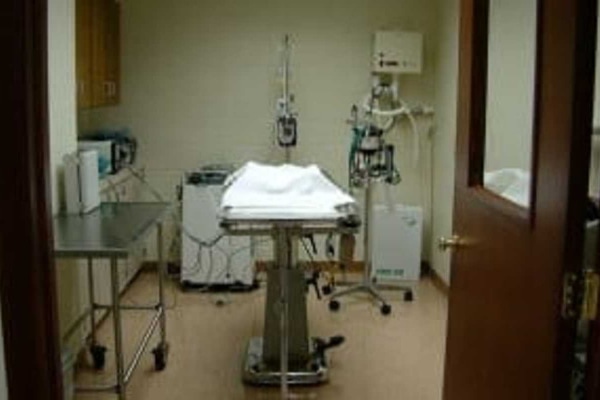
While this situation was incredibly tragic, what happened to Teddy is not common. Studies show that approximately 99.8% of healthy dogs that are anesthetized live to tell nigh it.
While it's true that historic period and infirmity are risk factors that make the odds less rosy, through custom-tailored anesthetic protocols and diligent monitoring of patients under anesthesia and in recovery, I believe the rewards ofttimes outweigh the risks.
Next, permit'southward learn some protocols that yous tin discuss with your veterinarian to assistance reduce those risks.
five ways to reduce the risks of anesthesia for older dogs
1. A thorough pre-anesthetic piece of work-upward
Whatsoever dog undergoing anesthesia should take a diagnostic evaluation directed by his or her veterinarian. These often include a physical exam and blood piece of work, and can include more advanced diagnostics such as 10-rays or ultrasound. The recommendations can vary based on your dog's age, breed, overall health, and what procedure he or she is undergoing anesthesia for.
Typically, geriatric patients will accept a more than advanced work-upward than young, salubrious dogs.
Have a discussion with your vet nearly what tests may be recommended for your dog prior to anesthesia. Veterinarians can tailor coldhearted drugs and procedures based on the results of these tests to minimize the risks associated with anesthesia.
ii. Anesthetic monitoring
All dogs should be monitored under anesthesia, but this is especially crucial for older dogs who may have sudden bug with their vitals. Anesthetic monitoring can be anything from a dedicated technician monitoring heart and respiration rate, to a pulse oximeter measuring oxygen levels, to an EKG, a capnograph measuring carbon dioxide output, blood pressure monitoring, and more.
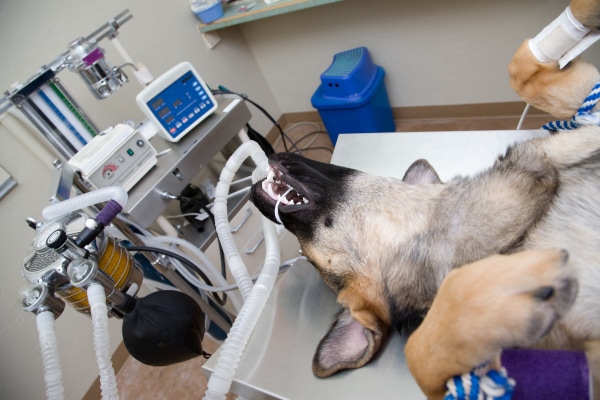
Some of these tests require special equipment, and not all veterinary hospitals have advanced monitoring. Before your dog has an anesthetic procedure, have a conversation with your veterinary about how your love former dog volition be monitored during the procedure.
For some dogs, it may be prudent to have the procedure done at a specialty referral infirmary, where they have more than advanced equipment and fifty-fifty board-certified veterinary anesthesiologists to monitor patients.
3. Stabilize underlying health weather condition
Anesthetic risk increases with age, but underlying medical conditions tin exacerbate this risk. Eye affliction, diabetes, Cushing'southward disease in dogs, thyroid disease, and other chronic issues tin cause problems under anesthesia. Veterinarians tin can manage virtually of these weather condition with medications, and try to make sure things are stable before proceeding with anesthesia whenever possible. Geriatric dogs with chronic medical conditions may likewise require more specialized blood tests as part of their pre-anesthetic work ups.
4. Post-op monitoring: senior dog anesthesia recovery
You lot may be surprised to hear that the most unsafe time for anesthesia is actually the commencement three hours afterward the process is completed. Statistically, this is when well-nigh animals have adverse anesthetic events. Just like what happened with Teddy, animals can practise great during surgery so take life-threatening complications during recovery.
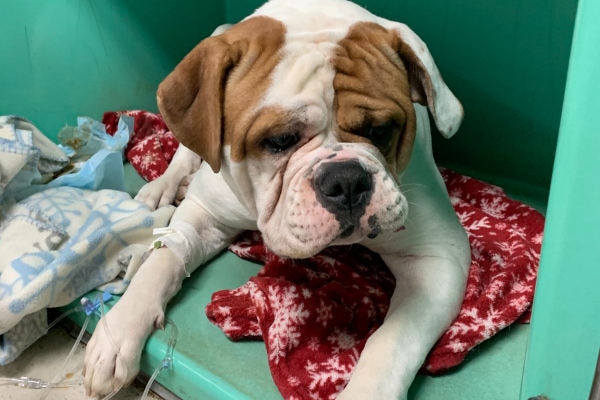
Mail service-operative monitoring is critical for any patient, and this is fifty-fifty more of import in older dogs who may have more than problem with animate and circulation. Your vet will take a plan for pre-operative testing, intra-operative monitoring, and a postal service-op plan equally well. For more than intensive procedures, he or she may recommend your dog stay overnight, or be transferred to a 24-hour facility if needed.
5. Avoid it: Skip constituent or corrective procedures
Every coldhearted procedure involves a adventure/benefit analysis. In older dogs, the gamble is college, so nosotros need to brand certain the benefit of what we're trying to do is higher as well. Cosmetic or constituent procedures may not be worth it.
Explore whether local anesthesia may exist a possibility. Of course, for lifesaving procedures, or procedures where the quality of life improvement warrants the run a risk (like with Teddy'due south dental), anesthesia may not exist avoidable and can exist under the guidance of your veterinarian.
Caring for a senior dog often means making hard choices
I've been transparent about a state of affairs that haunts me to this day. But please don't miss my have-habitation message:
Age is non an excuse to do nothing. I believe this is a message even Teddy'due south parents would preach.
Living with pain in dogs doesn't take to be the case. It was not practiced enough for Teddy, for Teddy's family unit, or for me. We had the opportunity—and good odds—to dramatically change Teddy's quality of life for his remaining days, months, and years. If I had the same odds, I would have made the same option.
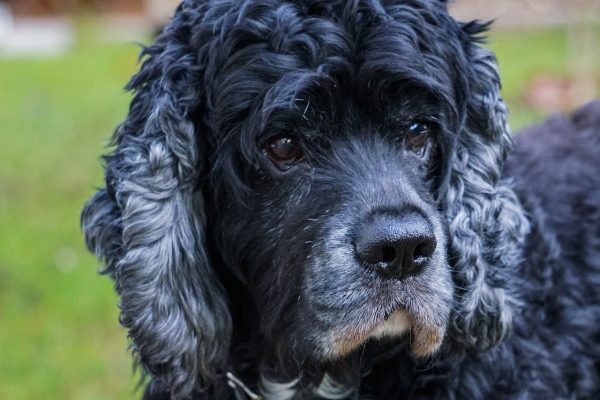
Anesthesia for dogs is non determined past historic period alone
I dearest my senior dog patients, and I want what's all-time for them. I find myself oftentimes having conversations with pet parents convincing them that their dogs don't need to live in the status quo because they are "too onetime to do anything about information technology."
While sure conditions make the risk of anesthesia for dogs far greater than the reward, age alone is not the only cistron that shuts the door on the possibility of anesthesia.
Speak with your vet about anesthesia for your old dog
If you've been nervous about anesthetizing your senior canis familiaris for a recommended procedure, I have some homework for you. Talk to your vet. Have a frank discussion with him or her about your concerns and learn about the risk-reward ratio. You may be surprised at the possibilities!
Are you considering anesthesia for your senior domestic dog?
Please comment below.
mccarthyowery1942.blogspot.com
Source: https://toegrips.com/senior-dog-anesthesia/
0 Response to "Why Take Care of My Baby's Teeth, They Fall Out Anyway"
Post a Comment